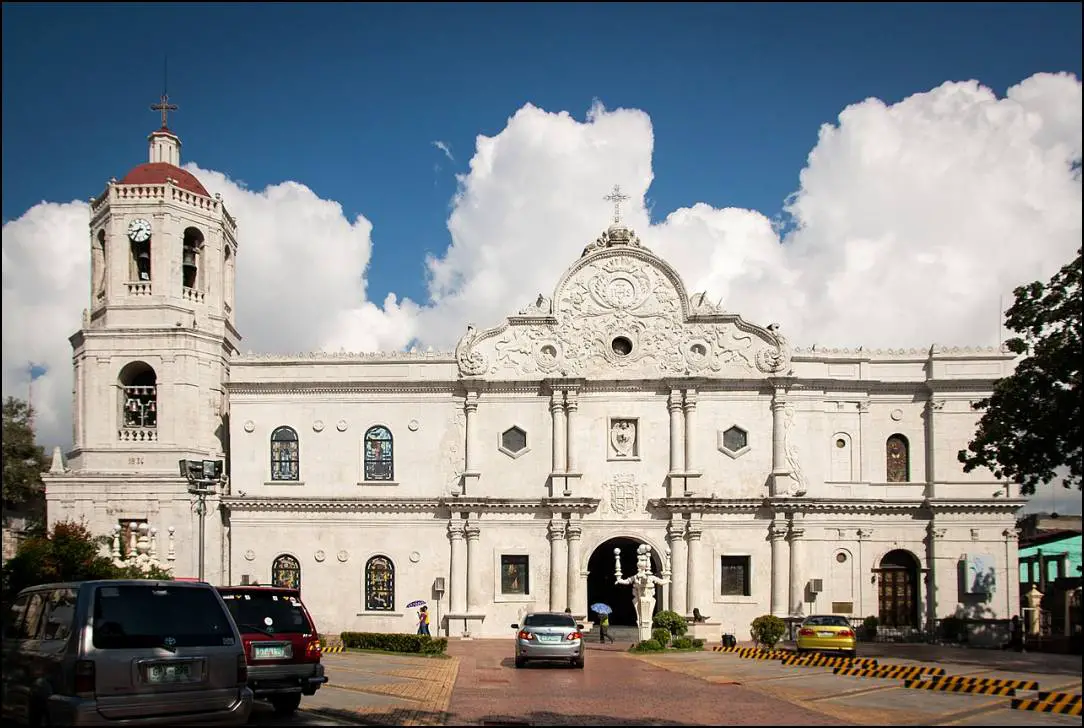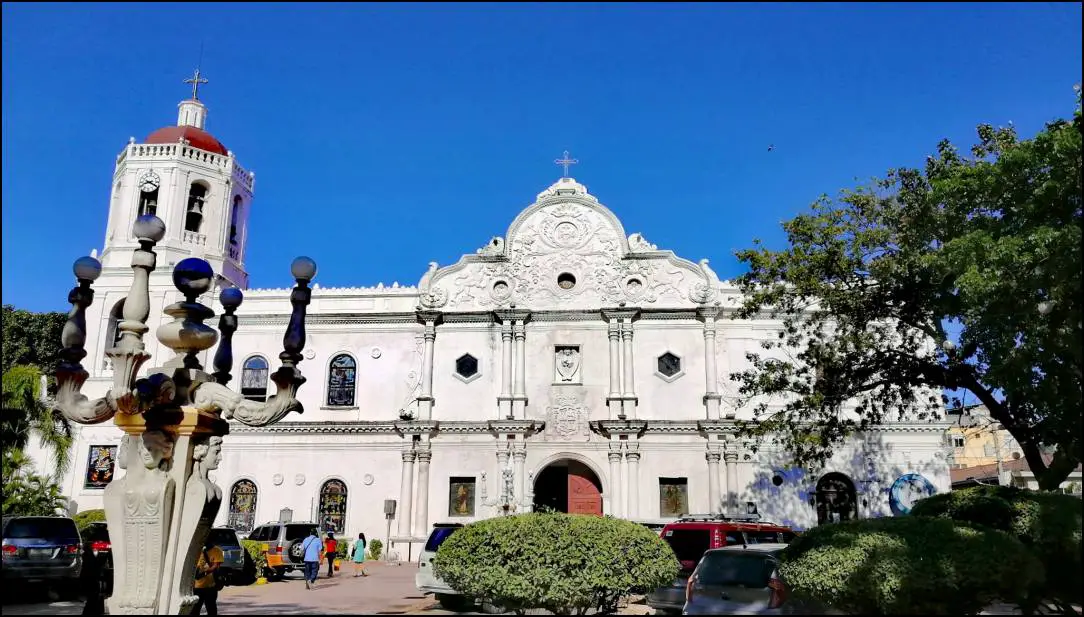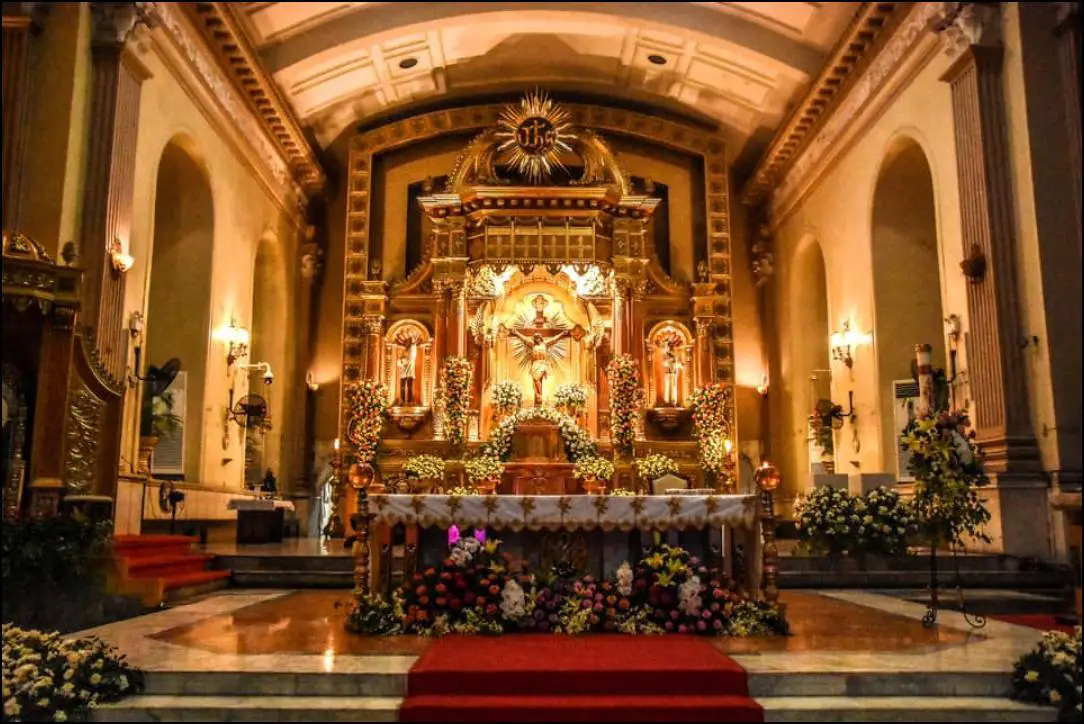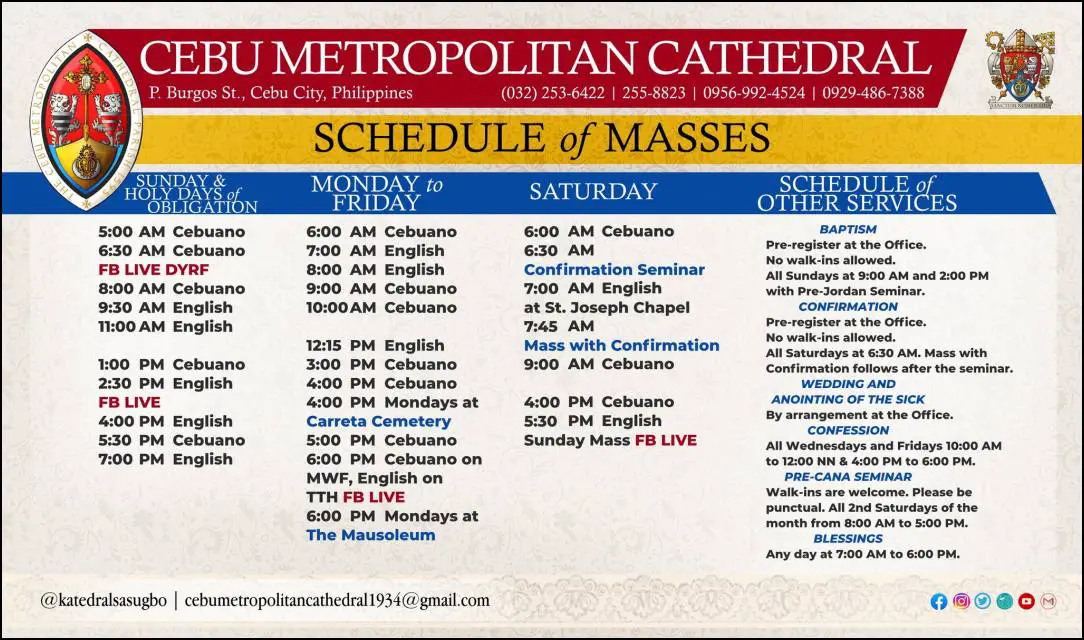The Cebu Metropolitan Cathedral, also known as the Metropolitan Cathedral of the Most Holy Name of Jesus and St. Vitales, is an iconic religious landmark located in the heart of Cebu City, Philippines. As the ecclesiastical seat of the Metropolitan Archdiocese of Cebu, the cathedral holds a significant role in the spiritual life of the local Catholic community.
Also read: Historic Basilica Minore del Santo Niño de Cebu
Constructed in the Spanish colonial style, the cathedral stands as a testament to the rich history and cultural heritage of Cebu. Its beautiful architecture, combined with its historical and religious significance, makes it a popular destination for both tourists and locals alike.

History of Cebu Metropolitan Cathedral
The Cebu Metropolitan Cathedral is a large religious building designed in the Spanish colonial style. It was constructed over three centuries, from the 17th to the 20th century, and is considered one of the most significant symbols of Catholicism in the Philippines. You can explore the square outside the church, where you’ll find statues of various religious figures.
The Spanish crown instructed Legazpi to construct a church close to the designated fortress before sending him to the Philippines. Upon arriving in Cebu on April 28, 1565, which happened to be the feast day of Saint Vitalis, the Spaniards paid tribute to and recognized him as their patron saint. Saint Vitalis’ feast is commemorated annually on the same day.
- Cathedral in 2010

Architectural Features
The Cebu Metropolitan Cathedral showcases a blend of Spanish colonial and Filipino architectural styles, reflecting the rich cultural heritage of the region. Some of the notable architectural features of the cathedral include:
Facade
The facade of the cathedral features a beautiful combination of Baroque and neoclassical elements. The main entrance is adorned with intricately carved wooden doors and is flanked by two octagonal bell towers. The cathedral’s main entrance is on the southern side, featuring three portals, among which the central one is the tallest. The main doorway is adorned with statues of Saint Peter and Paul the Apostle, while the secondary entrance displays Saint Andrew and James the Just.

Interiors
The cathedral’s interior boasts a spacious nave with high ceilings, supported by a series of large columns.

Altar
The main altar of the Cebu Metropolitan Cathedral is a magnificent work of art, featuring a retablo (altarpiece) adorned with gold leaf and intricate carvings. At the center of the retablo is a large statue of the crucified Christ, surrounded by other religious figures and symbols. The altar is further enhanced by an elegant baldachin (canopy), which is supported by four marble columns.

Aside from these main architectural features, the cathedral also houses several side chapels dedicated to various saints and religious icons. These chapels showcase exquisite artwork and serve as quiet spaces for prayer and reflection.
Significance and Role
The Cebu Metropolitan Cathedral holds a prominent position in the religious, cultural, and historical landscape of Cebu City and the Philippines as a whole. Its significance and role can be highlighted in several ways:
- Ecclesiastical Seat: As the ecclesiastical seat of the Metropolitan Archdiocese of Cebu, the cathedral serves as the central place of worship and governance for the local Catholic community. It is the venue for various religious ceremonies, including the installation of archbishops, ordination of priests, and celebration of important liturgical events.
- Spiritual Center: The cathedral serves as a spiritual center where locals and visitors alike can come to attend Mass, offer prayers, and seek solace. It is a place where the faithful can deepen their connection with God and strengthen their faith.
- Cultural Heritage: The Cebu Metropolitan Cathedral is a testament to the rich cultural heritage of Cebu City, showcasing a blend of Spanish colonial and Filipino architectural styles. It stands as a reminder of the city’s historical ties with Spain and the influence of Christianity on Filipino culture.
- Historical Landmark: The cathedral has witnessed numerous significant events throughout its history, including the arrival of Christianity in the Philippines, the growth of the Catholic Church, and the impact of World War II. As a historical landmark, it provides a glimpse into the past and helps tell the story of Cebu City and its people.
- Tourist Attraction: The cathedral’s beautiful architecture, combined with its historical and religious significance, makes it a popular tourist destination. Visitors from all over the world come to admire its grandeur and learn about its history, contributing to the local tourism industry.
It serves as a place of worship, a spiritual center, a cultural heritage site, a historical landmark, and a tourist attraction, making it an essential part of the city’s identity.
Schedule of Masses
Please note that schedules may change due to holidays, special events, or other circumstances. To ensure you have the most up-to-date information, it’s best to contact the cathedral directly or check their online resources before planning your visit.

Nearby Attractions
While visiting the cathedral, consider exploring other nearby attractions to make the most of your time in Cebu City. Some notable sites include:
- Magellan’s Cross: A historical landmark that commemorates the arrival of Christianity in the Philippines, represented by a wooden cross housed in a small chapel.
- Fort San Pedro: A 16th-century military defense structure built by the Spanish, now serving as a museum showcasing the history of Cebu City.
- Basilica del Santo Niño: A centuries-old church that houses the revered image of the Santo Niño de Cebu, an important religious icon for Filipino Catholics.
- Casa Gorordo Museum: A restored ancestral home that provides a glimpse into the lifestyle of a prominent Filipino family during the Spanish colonial era.
By visiting the Cebu Metropolitan Cathedral and its surrounding attractions, you can gain a deeper understanding of the city’s rich history, culture, and religious heritage.
The Cebu Metropolitan Cathedral is an important religious, cultural, and historical landmark that showcases the unique architectural styles and rich heritage of Cebu City. Whether you’re attending a mass, admiring the beautiful architecture, or exploring the nearby attractions, a visit to this iconic cathedral will undoubtedly be a memorable experience.
Frequently Asked Questions
1. What is the architectural style of the Cebu Metropolitan Cathedral?
A: The cathedral showcases a blend of Spanish colonial and Filipino architectural styles, with elements of Baroque and neoclassical designs in its facade and interiors.
2. Is there an entrance fee to visit the Cebu Metropolitan Cathedral?
A: There is no entrance fee to visit the cathedral. However, donations are always welcome to support the maintenance and preservation of this historic landmark.
3. How can I find the mass schedule for the Cebu Metropolitan Cathedral?
A: The mass schedule may vary, so it’s recommended to check the latest schedule on their facebook page or you may call the cathedral’s office before your visit.
4. Is photography allowed inside the Cebu Metropolitan Cathedral?
A: Photography is generally allowed inside the cathedral, but it is essential to be respectful and considerate of the ongoing religious activities and other visitors. During masses or other religious events, it’s best to avoid using flash or taking photographs that may disturb the proceedings.
5. Are guided tours available at the Cebu Metropolitan Cathedral?
A: Guided tours may not be regularly available at the cathedral. However, you can explore the cathedral on your own or with a local tour guide who can provide you with more information about the history and architectural features of the cathedral.
Video: Cebu Metropolitan Cathedral Walk Tour
Summary
The Cebu Metropolitan Cathedral serves as a symbol of the city’s rich religious history. It stands tall and proud, inspiring awe and wonder in all those who visit. From its sheer size to the intricate details of its architecture, the cathedral is a sight to behold. But more than that, it is a testament to the faith of the people of Cebu.
Also read: Guide to Simala Shrine Church in Sibonga, Cebu
Despite the challenges and struggles that have beset the city over the years, the cathedral remains a beacon of hope and a source of strength. It is a reflection of the resilience and determination of the Cebuanos, and a reminder of the enduring power of faith. In many ways, the Cebu Metropolitan Cathedral is more than just a place of worship – it is a symbol of the city’s identity and a source of inspiration for generations to come.
Contact Information
Address: P. Burgos St, Cebu City, Philippines
Phone: (032) 253 6422
Email: cebumetropolitancathedral1934@gmail.com
Facebook page: https://www.facebook.com/katedralsasugbo
Opening Hours: 8:00 AM – 12:00 PM, 1:00 PM – 5:00 PM (Monday – Sunday)